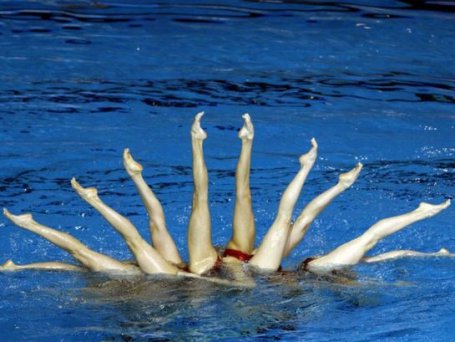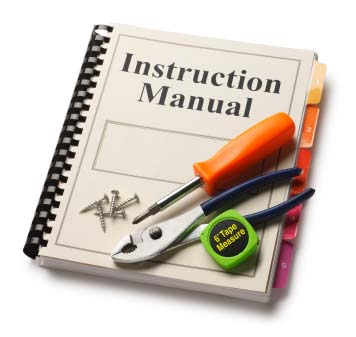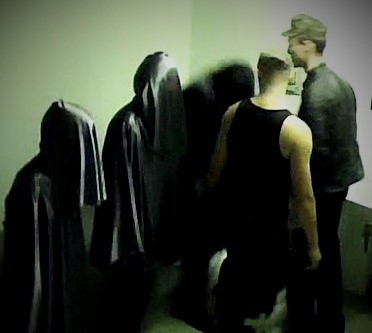Original post: http://www.electro-gn.com/299-legnpararborescence-deuxiemepartie
Translation: Vincent Choupaut
—
I presented in the first part of this article a larp model which is a succession of scenes on a choice tree, like a “choose your own adventure” book. We will now study some specificities of that kind of game. For that purpose, I suggest taking as an example a game about the investigation of a detective, like in a thriller.
Synchronization of players
It is a very concrete technical challenge, inherent in the game option I suggest. Our players are divided into different scenes. The division is convenient, because we can twist the time as we want, according to the shape that the story can have.
I spoke about flashbacks and flashforwards, which are stylistic and narrative elements, easy to set up in this game structure. We may also let our players play in different temporalities. In my example, I can choose to divide the game into seven phases, namely seven sets of scenes, where each phase matches with a day of the week. That being said, nothing forces the players to have one scene per day, from Monday to Sunday. A player who goes from a scene to another may play on Monday at noon, then on Monday evening, and why not skip Wednesday. These gaps may eventually make sense in the plot (here, the investigation).
Anyway, we can twist the time of the story as we want. However, the “off-game” time remains a real constraint we have to manage with more discipline than in a classic larp. No player has to wait for other players because he finished his scene before them; no player has to hurry up to finish the scene because he has to go back to the others…
For that purpose, various strategies are possible:
1/ The buffer scene: A first way to limit this kind of case is to plan an emergency scene which allow to use the time between the two scenes. Ideally, it is not linked to the main plot. It has to keep the player busy, in the best sense of the word.
Ex.: My character, each time he is alone, keeps turning over his past. It is always the same scene. His wife reproaches him for not being at home. Shouts, door’s banging… then she gets sick and dies… This memory which haunts him may become a recurrent scene.
That remains a heavy solution to manage with, because it extends the time for designing the game (there are extra-scenes to create) and the work for organizing the scenes. Besides, it just moves the problem without really solve it: A player ahead of schedule may perfectly start a buffer scene which lasts only five minutes. Of course it is not so serious as far as these scenes are not connected with the main plot. Being interrupted within a buffer scene has no effect on the game. It may be nevertheless frustrating.
2/ The extra event: You don’t plan entire buffer scenes, but introduce in each scene an element that can extend its duration. It might be a game element, a NPC’s intervention, and so on.
Ex.: If my scene takes place in a bar, and if the action is finished for the characters, I can plan an event like a fight or a poker game.
3/ A collective place with atmosphere: It is the same spirit as the buffer scene. But now it is a common space for all the players in transition. This solution is not applicable to all the atmospheres and stories.
Ex.: The example of the bar again. It might be the place where the characters are going to drink and listen to music. The barman is a reference organizer. Some organizers come and speak to the characters. These ones are not allowed to speak with the others. The bar is smoky; the characters have to ignore each other, even if they know each other because of the scenario. This is not really realistic, but it gives a stylized effect to the story.
We can imagine other strategies, but they are “spare wheels”: Ideally they shouldn’t be used. The authors have of course to anticipate before, in the design of the game. Tests and rehearsals are often welcomed.
The transitions
A controlled off-game
In the game format I suggest, the passages between each scene show a break we might convert into an advantage. There are many things in a larp which make the players feeling “off-game”: the need to go to the toilet, to change costume, to smoke a cigarette in a corner… The transitions may also serve to handle these kinds of things.
The atmosphere during the transitions
For my example, I choose to come within the scope of the thriller logic as a piece of work, and I write every inter-scene for each character in literary style in a small text. I can add some background music, likely to each character. I can also have no global concept, applied to all, but specific transitions depending on each character, the scene whose he is coming from and the scene whose he is coming to.
Ex.: My reference is the thriller. Rather than being only a thematic reference, I decide to go further and to inscribe the game with the logic of the novel, giving to each player, at the end and at the beginning of each scene, a literary text which direct him. He is thus the hero of the story. He tells it from his point of view. The player, with this process, becomes the narrator of his own story. It may also communicate to the players a state of mind of the character at a precise moment.
So it leads us now to speak about the instructions we can give to the players, and what allows this specific format.
Instructions
Traditionally, the larper receives a sheet, sometimes really dense, several days before the game. Then he is literally dropped into nature. Punctually, some interventions of the organizers come and centre the game, allow the scenario to progress, or put right the situation in case of problem.
It would be better to use this constraint at most, and convert it into an advantage for the game. That’s why the transition phases may also serve to “coach” the players. These interventions might be of two natures:
1/ Centre an objective
In most of larps, the plots have already begun in the sheet. It the traditional narrative outline, we go from the exposition of an initial state, through the appearance of the problem, the search and then the application of solutions. The objectives which appear during the game are rare. This format is a practical way to reveal gradually new coherent objectives, and eventually make them progress clearly during the game (rather than abstract objectives in a sheet, which reveal themselves uninteresting or unrealizable).
2/ Centre the interpretation of a character
Not because the player is untrustworthy, but if you want to let people play more than 48 hours with only an 8 pages sheet for frame received before the game, you have to believe in it! There are inevitably facets of the characters which will be forgotten, either because the game doesn’t give any opportunity to emphasize them, or because the player is too tired. In the same way as for an actor, to play convincingly during many hours, the larper can’t stick to a role or the story permanently. There are inevitably some slack periods. It is all the more regrettable since all the players don’t feel shattered at the same time. It may seriously harm the rhythm of the game, when it’s not the scenario itself. We have to give ourselves the abilities to trust the players, or rather, not to have to trust them. We can tell a player which state of mind his character has at the beginning or at the end of a scene.
It is neither necessary, nor recommended, that these interventions express themselves as a face to face discussion. We have to think about them as a brief dialogue negotiated between the player and the organizer, in order that both are on the same wavelength. We speak about instructions rather than rules: Where the rule is a constraint, the instruction encourages. The player remains of course free of his game and choices. It is also a moment in the course of which the organizer is available for any question the player might ask.
Around the game
Before the game
Since it is a particular form of game, it is essential to warn the players, in order that they may take part in full knowledge of the facts. During the briefing, it is important to remind the players of the principles of the game. At the beginning of the larp, characters are placed in their respective start scenes (alone, in groups or all together, according to the tree logic chosen for the scenario).
After the game
The debriefing is an essential moment of each game. It may tarnish the experience of the player if it is not well managed. More than all the questions the players usually ask during a debriefing, the organizer has to expect questions like “and if”. And if, at the end of such scene, I chose to do this instead of that, what would have happened? The organizer has to be able to present the decisions that they took, and to explain what has turned the game on a path rather than another.
It is obvious that this game model has qualities and weaknesses, and we will try to examine them in detail in the third and last part of this article.





